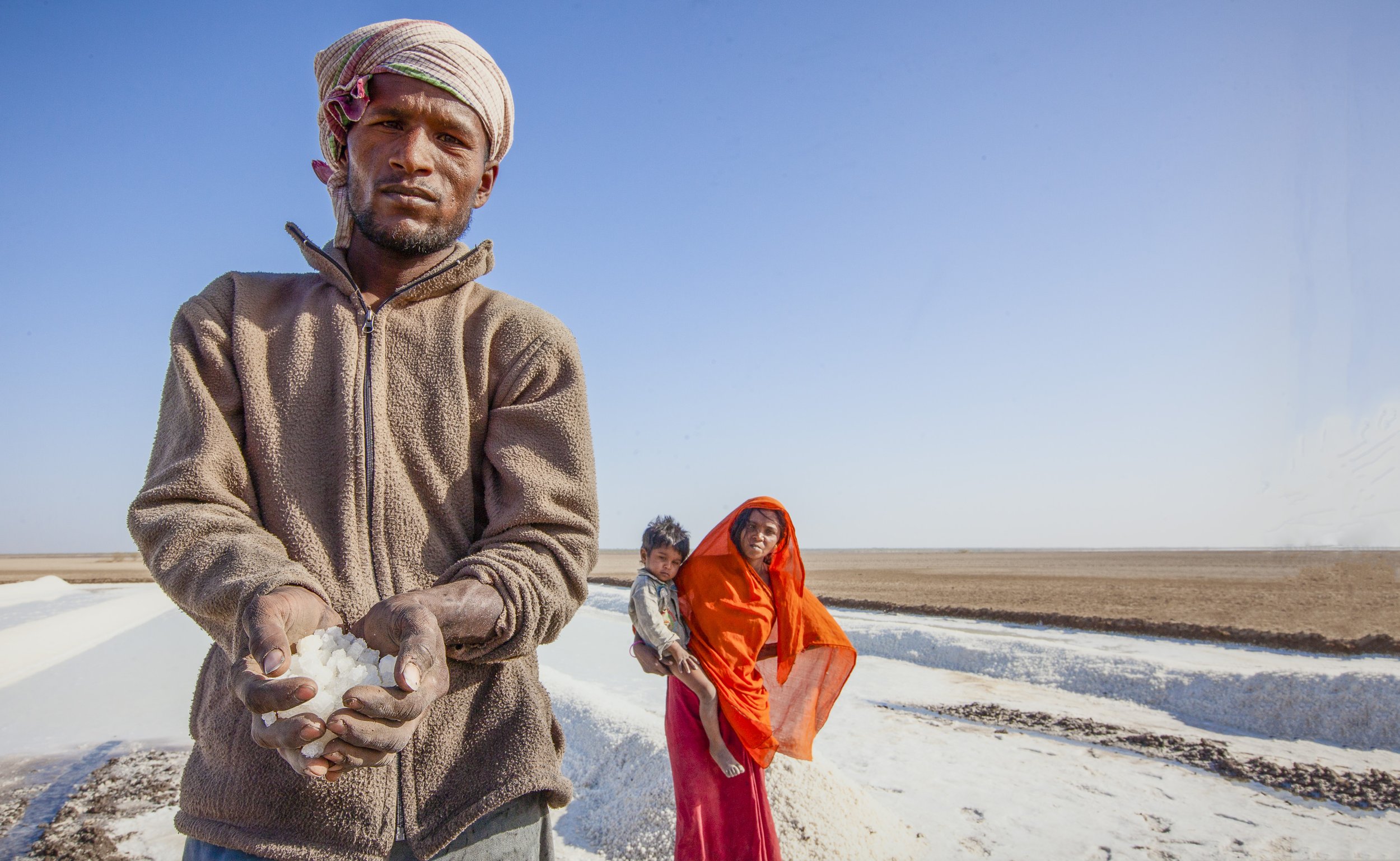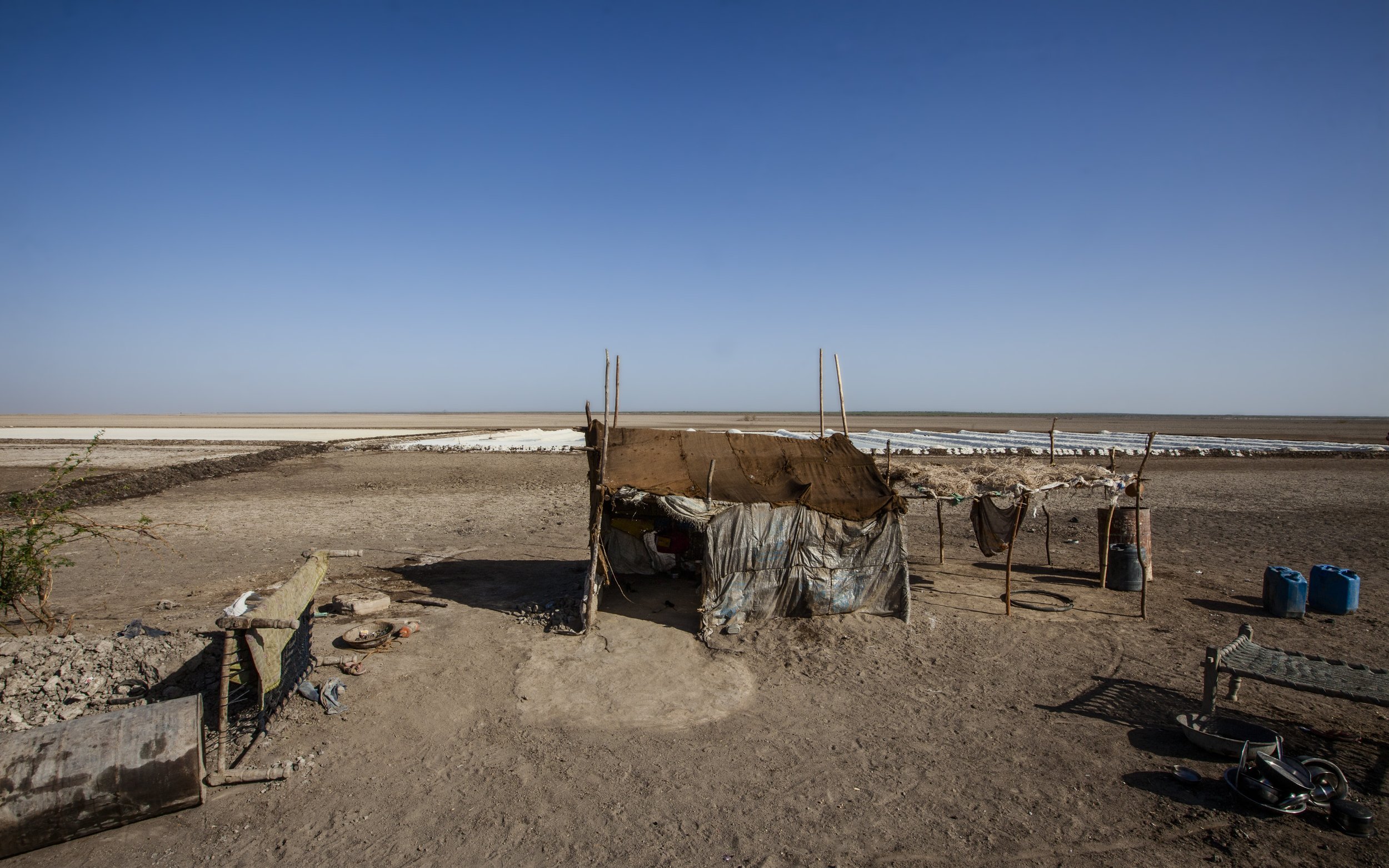Salt Workers :
of the Little Rann of Kutch
The Arabian Sea retreated millenniums ago, leaving rich deposits of salt under the harsh desert landscape of the Little Rann of Kutch in India’s far west state of Gujarat. Each year the monsoon rains turn the desert into 5,000 square kilometres of salty marsh, forcing the animal inhabitants to seek refuge amongst the sparse thorny vegetation on tiny islands of high ground and the salt workers to return to their impoverished villages around the rim of the desert. When the rains stop and the mud has dried sufficiently to glitter again with salt, all these desert survivors return to their incredibly tough life.
It is the intense heat of September till March that allows the salt workers, known as agariyas, to carry out their ancient grueling work. Temperatures can reach 50 degrees ‘in the shade’, if you can find it that is, for they work in the open salt pans most of the day and their only protection is their simple humpies, rebuilt each year. Some 45,000 people are involved in the Little Rann as salt workers, their families and dependents.
The dreadful cycle begins with seeking an advance payment from the wholesale salt merchant who owns the lease and relies on many family groups to actually produce the salt crystals he transports to the markets for considerable profit. The salt workers use most of this advance money to re-sink the well and buy fuel for the crucial pump that brings the saline water (seven times saltier than the ocean) from the wells into the drying pans, as well as to buy deliveries of fresh water and basic food for themselves. At the end of the season the salt worker is paid about 40c per 100kg bag of salt, often resulting in little or no income once the advance money is taken off. All of this work demands long hours of physical effort under the relentless sun, usually with no protection for feet, hands or eyes, resulting in appalling health issues, especially gangrene, tuberculosis, blindness and premature death. They feel they have no choice.
We met a Rabari salt worker and his wife with their three year old son working hard on the pans near their humpy. They had constructed a series of drying pans by hand and feet, then pumped the well water into successive pans for raking and concentrating into brine until it had dried out completely to produce crystalized salt ready for transport. Each cycle takes about four months. They were fortunate to have an old bicycle that occasionally enabled them to visit their other two children who stay with their grandmother for the eight month season. With luck they may return to their village in April with $600.
We met a Rabari salt worker and his wife with their three year old son working hard on the pans near their humpy. They had constructed a series of drying pans by hand and feet, then pumped the well water into successive pans for raking and concentrating into brine until it had dried out completely to produce crystalized salt ready for transport. Each cycle takes about four months. They were fortunate to have an old bicycle that occasionally enabled them to visit their other two children who stay with their grandmother for the eight month season. With luck they may return to their village in April with $600.
Robert van Koesveld






